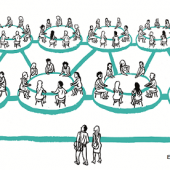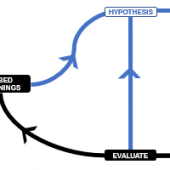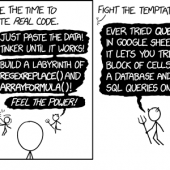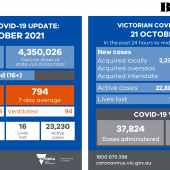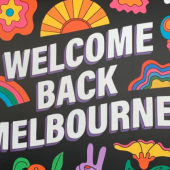I went to Le Bon Ton tonight and the 3 of us were seated in the courtyard. As it’s summer, sun was still up despite my watch telling me it’s almost 8pm. Oddly fresh beautiful weather, with the fairy light hanging and lots of greens all around us; it’s no wonder the big venue was packed. There were so many large groups of friends having their catch ups.
The menu had enough variety, but not too much. Ribs, briskets, fried chicken, sticky wings, mac & cheese, chips, onion rings, coleslaw, and a variation of the above protein as filling in sandwiches, burgers and salads; plus a “$69” set menu for those who want to be treated to a taste of most things (including desserts). The other page of the menu have plenty of drinks options.
We put in our order at the counter, as courtyard diners do not get table service, paid and sat down. Seeing how busy they were, I was slightly concerned on the wait for food. Proving me wrong, they serve our drinks within 5 minutes of ordering, and within another 5, the food appeared. Another very notable aspect, was how friendly and relaxed the waiters/waitresses were. They were great hosts.

We chatted away while digging into the yummy food. All the while, I couldn’t get over the impressive speed of food delivery to the table for a busy restaurant. I took a mental note on what could possibly contribute to the speed:
- simple menu that allows customers to mix and match;
- slow cooked food that can be served at room temperature, sauce separated so food don’t become soggy / stale;
- enough options for different dietary requirements;
- as many selections of drinks as there are food, cause drinks don’t take up much space, plus quick and easy to put together and serve;
- standard size bowls, plates and sauces would help kitchen spacing.
I so wish I could see the kitchen. Alas – my imagination would have to do.
Translating this to the process of creating value out of data, what is the equivalent of the above characteristics?
Let’s say — Platform Engineering is like restaurant building renovation, kitchen fit out with oven, stove and dishwasher selection, plumber, electrician, etc. All that should remains from this aspect for day to day operations are gas, electricity, water bills and rent. Plus maybe the occasional call for help to plumber, electrician if something breaks down.
Data Engineering then covers finding the right supplier for the ingredients and serve wares; how to efficiently store the food stock and the plates, bowls, etc; chopping up ingredients, cooking and plating of food, all the way to cleaning up the kitchen after a day’s worth of cooking and serving food.
Data Analysis primarily covers recipe creations and menu assembly; and for some restaurants include market research, to find out what appeals to the regular patrons. Leaving Data Visualisation to be represented by waiters &/ waitresses, venue cleaners.
Based on the above then — I’d lean towards separations of Platform Engineering and Data Engineering, while keeping Data Engineering and Data Analysis very tightly collaborating together; with Data Visualisation can be loosely coupled into it but not too loosely.
Hmm – much food for thoughts.

